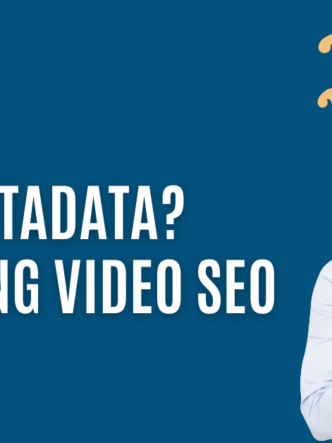The tech industry’s reach is felt in almost every aspect of commerce. As soon as Silicon Valley startups began setting their sights on the real estate industry, it was only a matter of time before it too would enjoy similar revitalization. This all culminated in an explosion of software geared towards real estate agents’ unique business use case.
Websites that were previously just fronts for the business’ main operation are suddenly being completely overhauled. Realtors are now beginning to embrace the full power that the internet has granted modern companies.
The first indication of this is realtors discovering that a website can be used for far more than just showcasing pictures of certain rooms in the house. Emerging technology presents potential buyers with the opportunity to explore the property with 3D imaging.
This isn’t to say that the use of pictures is going to be phased out any time soon. But, unless they are very high-quality HDR shots, they’re going to have a relegated role.
In a nutshell, the real estate industry is moving toward an increasingly visual marketing model.
 Why is visual marketing important?
Why is visual marketing important?
Visual tools have taken up a top role in real estate marketing. These visual tools include visual content such as high-quality photographs, detailed floor plan, well-staged listings and, more recently, adoption of video.
Regardless of whether the realtor opts to use them individually or display them in a gallery, images increase the impact of properties’ commercial listings. Correspondingly, this translates to an accelerated sales process and less time spent on the market.
“One of the reasons visual content holds such a high position in the marketing world is how easy it is to digest. Words work well for people who are imaginative, or people that already have an idea about the different cogs that turn to enable your business to run. Visual content resonates with just about anyone.”
Imagine describing a 600 sq. ft property, furnished to the tee,complete with leather chairs and a king-sized bed in the master bedroom. Next, think about how effective it would be to show them instead.
Visual forms of media, such as photos and videos, have been shown to drive up engagement on Facebook and Instagram, as opposed to simple text posts.
On average, pictures get twice the engagement that text updates do.
It’s easier to argue, however, that the more important aspect of visual marketing is that videos trigger more sharing rates. On Facebook, videos are shared 12 times more often than texts and simple link. And, according to Facebook’s self-published metrics, 87% of the most-shared items on their platform includes an image.
Harnessing the power of visual marketing
Visual marketing, regardless of how well-designed and appealing it is, will be judged solely on the number of people that interact with it.
While exploring all the ways visual marketing can benefit you, an essential component to keep in mind is the platform you use to enable your content creation. Whichever one you choose should align strongly with the goals you have set in place.
Providing a virtual experience
The innovations that have facilitated the internet’s evolution into the behemoth we know today have influenced a lot of changes in consumer expectations. The most relevant of these to realtors is that the average person expects to be able to experience everything remotely.
The readily-available repository of video and high-quality images addresses exactly this. Before consuming your product first-hand, people should be able to experience it through through images, videos, or a combination of both.
Let’s explore the following concept:
As a realtor, you probably have a floor plan at hand. This is we here ideas start being transformed into action. A floor plan illustrates the layout of the current building in manageable chunks of information, giving us value in two main ways.
First off, it gives the potential buyer a sense of direction and space; now, they understand what the space looks like and how it might be optimized. Secondly, once they’ve seen the property, they can go back to the floor plan and jog their memories.
Take advantage of personalized images
Nearly 93% of consumers rate visuals as the most important dimension they consider before making a purchase. ‘Visuals’ refers to the general presentation of the product to the customer – the kinds of images you choose, the colors in the said images and the overall user experience. A rapidly growing trend relating to the latter factor is personalization.
B2C personalization is a no-brainer. When dealing with other businesses, things enter a gray area; customers expect stimulating personalized visuals, but companies do not always know how to provide them. 74% of marketers agree that personalization is effective, and yet B2B personalization still has abysmal adoption rates. This is mostly due to a lack of understanding of the tools available.
The immediate challenge businesses face after learning how to leverage personalization tools is bringing all the personalization options together. Image CRM platforms like Cincopa allow you to target specific devices and collect data for easier personalization in the future.
According to a report by Seismic and Demand Metric, geo-targeting and lead-demographic targeting are the most effective B2B personalization strategies.
Nostalgic Marketing
Nostalgia-inspired marketing is a trend that has been around for decades, and still continues to be effective. It comes in the form of something as minor as the kind of font that’s used in branding a cereal, or shapes that are meant to take you back to a specific era. In taking advantage of this, images are perhaps the most effective way of leveraging people’s emotions.
Nostalgia can be an incredibly important part of your marketing strategy when used correctly. It can be described simply as using themes previously dominant in the past in your marketing strategy to attract a certain demographic of users.
It’s currently prominent with brands like Nike, that releases older versions of popular sneakers such as the Jordan brand every year. Even though they are brand new, they have a signature look that lets them immediately be associated with the 80s and 90s.
Leveraging images to create a nostalgic feeling can be achieved through:
- Showcasing your company’s history.
- Understanding the age in which your target demographic lies.
- Creating designs specifically meant to increase social sharing.
Embrace minimalism
In philosophical terms, minimalism is ‘survival with as little as is necessary’. The modern torch-bearer, that has successfully built its brand leaning heavily on its appeal is Apple. The tech giant has largely been credited with helping minimalism spread to different industries, not least of which is real estate.
When deciding how to restructure your website for maximum engagement, minimalism is likely one of the phrases you’ll come across during your research. It simply involves cutting down on excess. With this regard, visual marketing is the best friend you could ask for.
For example, when taking photos of a certain room, only include the features of the room you want to focus on. This might include removing that potted plant from the background, using a single, less-distracting color on the walls and a matching carpet.
Minimalist elements work best when they have company. Don’t just post one picture of the room and move on to the next one – have them taken at different angles, and maybe combine them into a gallery, slider or carousel.
This leads us back to the need for a proper content management system, rather than having to implement everything from scratch. Advanced platforms like Cincopa come with these features built-in.












